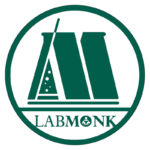[ps2id id=’background’ target=”/]
BACKGROUND
Convulsion in animals (rats/mice) can be induced by high voltage electric shock near brain. This experiment is a standard experiment for anti-convulsant activity screening and predicts the drug active against generalized seizures of Grand mal (tonic and clonic) epilepsy.1
[ps2id id=’requirements’ target=”/]
REQUIREMENTS
Animals: Rats (150-200 gms) or mice (20-40 gms)
Drug: Phenytoin (100 mg/kg, intraperitoneal route)
Apparatus: Electro convulsiometer
[ps2id id=’procedure’ target=”/]
PROCEDURE
Note the weights and mark the animals (rats or mice). Animals are to be tested for characteristics course of convulsion before the animal selection. The animals are to be treated with maximum current (150 mA for rats; 80 mA in case of mice) for 0.2 sec using convulsiometer. The course has a short latent period of convulsion up to 4-8 sec duration followed by tonic convulsion up to 15 sec and clonic convulsion of 30 sec approximate. Divide the selected animals into two groups (control and test) with 4 animals each. Control group receives saline and phenytoin treated group is drug treatment group. Shock is given after two hours of the drug injection. Apply MES shock as discussed above by the electrode on cornea or ear pinna.2 Note the time (in sec) for each phase of convulsion of animals i.e. tonic flexion, tonic extension, clonic convulsion, stupor convulsions, recovery or death. Repeat the same procedure for control group. Note the reduction in time or recovery.

Figure: Electro convulsiometer.
Observation table.
| Sl. No. |
Group |
Time (in sec) of different phases of seizures. |
|||
|
Tonic |
Clonic |
Stupor |
Recovery or death |
||
| 1 |
Control |
||||
| 2 | |||||
| 3 | |||||
| 4 | |||||
| 1 |
Phenytoin |
||||
| 2 | |||||
| 3 | |||||
| 4 | |||||
[ps2id id=’conclusion’ target=”/]
CONCLUSION
Drugs which protects from electric shock induced seizures in animal models are effective against Grand mal epilepsy. From this experiment, this can be concluded that Phenytoin has antiepileptic activity.[/vc_column_text]
[ps2id id=’references’ target=”/][ps2id id=’1′ target=”/]
REFERENCES
- Castel-Branco MM, Alves GL, Figueiredo IV, Falcão AC, Caramona MM. The maximal electroshock seizure (MES) model in the preclinical assessment of potential new antiepileptic drugs. Methods Find Exp Clin Pharmacol. 2009;31(2):101-6.
- Pithadia AB, Navale A, Mansuri J, Shetty RS, Panchal S, Goswami S. Reversal of experimentally induced seizure activity in mice by glibenclamide. Ann Neurosci. 2013;20(1):10-2.



